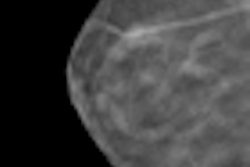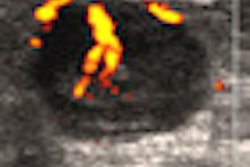Focusing too much on breast density in determining when women should begin breast cancer screening can be misguided, according to researchers in Philadelphia. They found that breast density variation can defy conventional wisdom -- namely, that only younger women have dense breast tissue.
In research presented at the recent American Roentgen Ray Society (ARRS) meeting in Vancouver, a group from Albert Einstein Medical Center cautioned that although there is an inverse relationship between patient age and breast density, with density decreasing as women age, there remains significant variation in breast density across all ages. Large percentages of young women have less dense breast parenchyma, while significant numbers of older women have denser breasts.
"There has been an assumption in the radiology world that breast tissue becomes less dense over time; however, there is almost no literature in radiology to support this," lead author Dr. Debra Somers Copit, director of breast imaging at Albert Einstein, told AuntMinnie.com.
She said that identifying the percentage of women with dense breasts at different age groups was the primary aim of the study. A secondary goal was to address whether or not women in their 40s had dense breast tissue.
Some organizations have used the argument that women in their 40s have dense tissue as the basis for recommendations that mammography shouldn't be utilized in this age group, Copit said. Her team's study undercuts this argument, showing that a large percentage of younger women do not have dense tissue.
"Deciding when a woman should start breast cancer screening can't be based on tissue type," Copit said.
Copit and colleagues performed a retrospective review of screening mammography reports from January 1, 2006, to December 31, 2010. The researchers excluded repeat studies on the same patient, and they identified patient age and mammographic density through the reports in the hospital RIS, with parenchymal density categorized according to BI-RADS lexicon. Copit's group then used a general linear model to assess the relationship of breast density and age.
A total of 80,470 screening mammography reports were identified in women between the ages of 21 and 97 years, with 34,797 reports included in the study after excluding repeat exams. From this subset, Copit and colleagues found that mammographic parenchymal density did, indeed, decrease with increasing patient age.
"We found that, yes, the density of breast tissue does tend to decrease over time," Copit told AuntMinnie.com. "But we also found that there are at least 40% of women in their 40s and 50s who have fatty or fibroglandular breast tissue, while about the same percentage of women in their 70s and 80s have dense tissue."
Therefore, screening decisions shouldn't necessarily be linked to breast tissue density, Copit's team concluded.
"Women should be screened at all ages, and there are studies to back that up," she said. "We just can't use breast density to argue against screening."



















